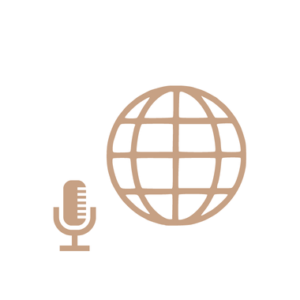FiO/OSA 2013 Kou Yoshiki
Research
FIO2013@ORLANDO, FLORIDA Conference Participation Report
Leading Graduate Programs 2012 Hiring RAs
Kou Yoshiki, 2nd year master's student, Tanabe Laboratory, Graduate School of Science and Engineering
October 12, 2013
At FiO2013 (Frontier in Optics) held October 6-10 in Orlando, Florida
I made a poster presentation and attended many of the presentations.

FiO2013 was my fourth international conference (one of them was ISPEC2012 at the University of Tokyo, so it was actually my third). When I was first assigned to the laboratory, I had no idea that I would have to attend so many conferences. I should be thankful that I have been given so many opportunities.
FiO2013 (Frontier in Optics 2013) was the annual conference of the Optical Society of America (OSA). The conference itself was not so big (about 700 presentations including posters, as I recall), but invited speakers included Lipson (Cornell Univ.) and Miller (Stanford Univ.), who are leading experts in silicon photonics, Paiter (MPL) and Kippenberg (EPFL), Paiter (MPL) and Kippenberg (EPFL) in Optmechanics, and Vahala (Caltech), the originator of the toroidal resonator studied in Tanabe Lab (Vuckovic (Stanford) in photonic crystals was also invited, but he was not present). Invited speakers from Japan included Dr. Noda of Kyoto University, Dr. Baba of Yokoguni University, Dr. Matsuo of NTT Photonics Laboratory, and Dr. Notomi of ISSP. Compared to CLEO/EUROPE in May, many of the presentations were close to my specialty and I could understand the contents well, which was very useful. As mentioned above, there were many invited lectures, so it was a very valuable experience for me to listen to the lectures of researchers who are active at the forefront of the world.
Next, I would like to report on the recent research trends that I have observed throughout the conference. Micro optical resonators, in which I specialize, have a variety of application fields, but the most frequently presented topics were sensing, optical frequency comb, and optmechanics applications. In the area of sensing, it seemed that the phase of sensing is shifting from the phase of sensing the adherent substances on the bare resonator surface to the phase of selectively sensing only the target substances by applying functional materials on the surface in advance. It was no longer a research on light, but rather a research on chemistry and biology. As for the optical frequency comb, it was no longer just a matter of generating a frequency comb, but had advanced to the step of oscillating continuous pulses in the time domain by controlling the phase of the comb. In order to conduct such research, one must have not only micro optical resonators but also waveform shaping technology. Incidentally, the research was presented by Weiner's group at Purdue University, which is famous for its waveform shaping technology, and can be said to have successfully combined micro optical resonator technology with waveform shaping technology. Finally, I would like to discuss Optmechanics, a research field that combines light and mechanical vibration via micro optical resonators. In addition to the theoretical difficulties of this research field, the fabrication technology of the devices used in this research field is also very advanced. Unless there is a fabrication expert in the group, it will be difficult to enter this field. In the field of optmechanics, the group has progressed from the basic stage of confirming the coupling between mechanical vibration and light to the stage of exploring applications of optmechanics, such as wavelength conversion of light via mechanical vibration. The progress in these fields has made me realize that it is no longer possible to conduct good cutting-edge research with only one specialty, although it may seem like it. There are cases such as optical frequency comb, which requires a relatively close specialty such as the combination of micro optical resonator technology and wave shaping technology, and cases such as sensing applications, which requires a far different specialty such as micro optical resonators and chemistry.
Finally, I would like to report on my presentation. This was a poster presentation. This research is a supplement to the paper on Kerr bistable memory published last year, with more detailed study. This was the second time for me to present a poster in English, and I think I was able to do so more smoothly than the previous time. However, once again, I felt the difficulty of question-and-answer sessions when the level of the presenter's prior knowledge was unknown. In the case of an oral presentation, it is safe to assume that the person listening to the presentation and asking questions has a similar level of prior knowledge to the presenter to some extent. However, in the case of a poster presentation, there are many cases where the audience has no prior knowledge at all, and questions must be asked while exploring the other person's knowledge. In this case, I received a question about loss, but I was not sure whether loss meant coupling loss or absorption loss in the resonator, and I was at a loss to answer. In such a case, we should not try to find the correct answer from the beginning, but rather, we should search for the correct answer while communicating with the other party. If you are afraid of the interaction with the other person, you will end up with the former response. Finally, as an aside, during my poster presentation, I became acquainted with a Western female researcher affiliated with the Okinawa Institute of Technology (OIST). She is interested in WGM resonators and Optmechanics. We have to cherish such connections because there are not many research groups in Japan that are involved in these fields. This event reminded me of the importance of the networking that is provided by academic conferences.
- Categories
- 国際会議報告


